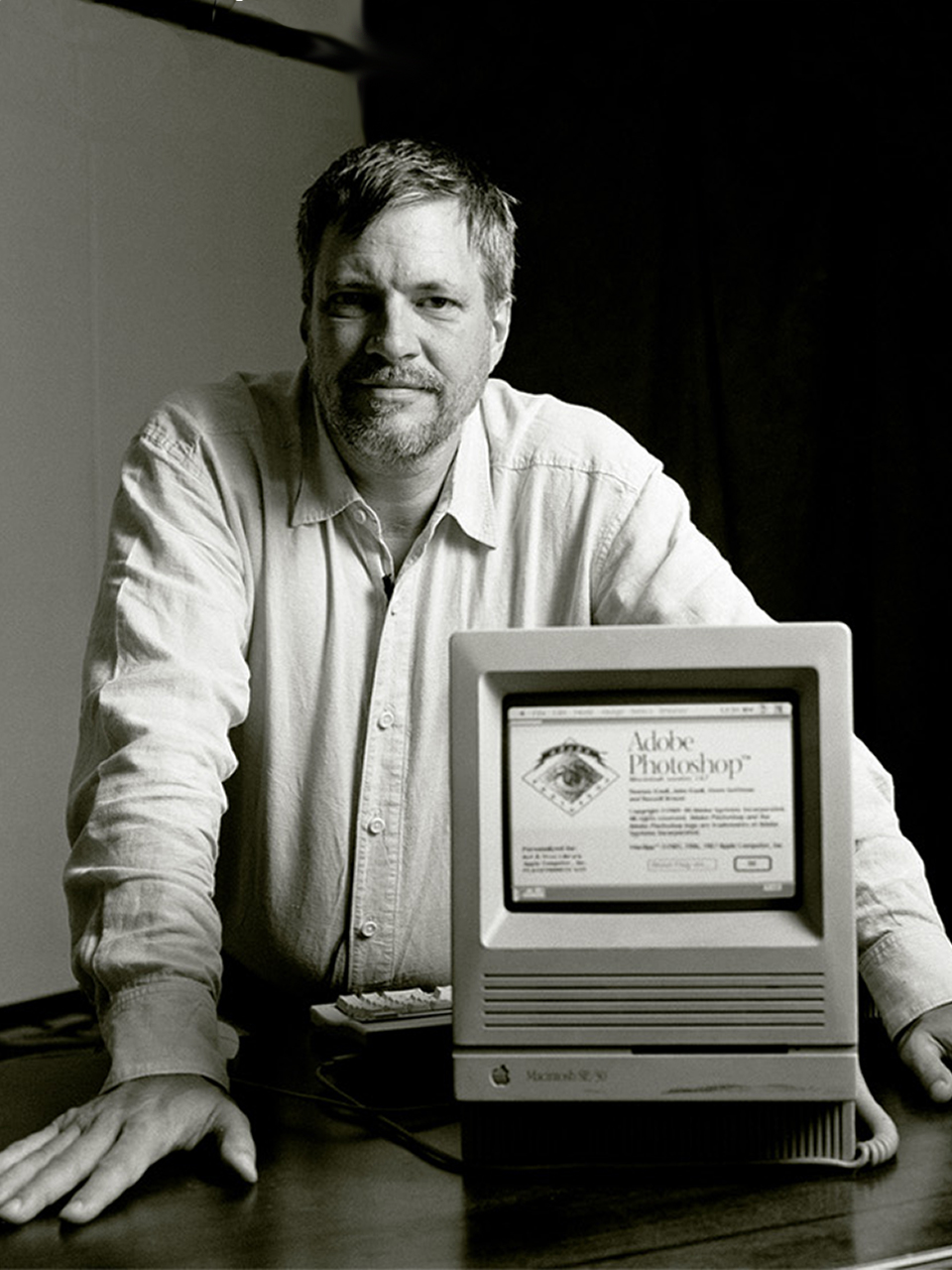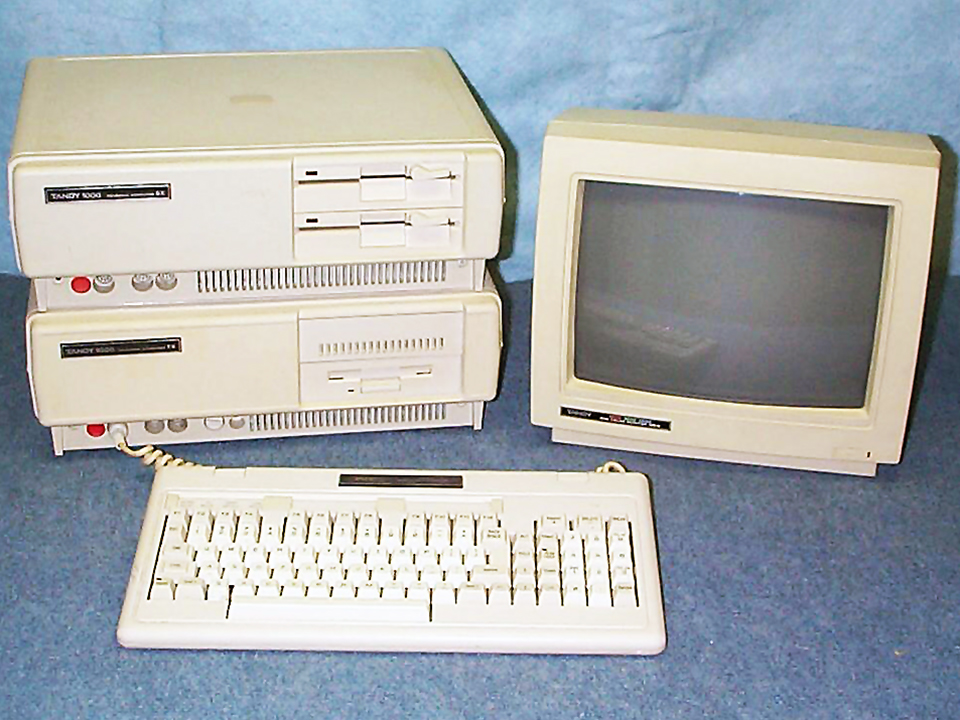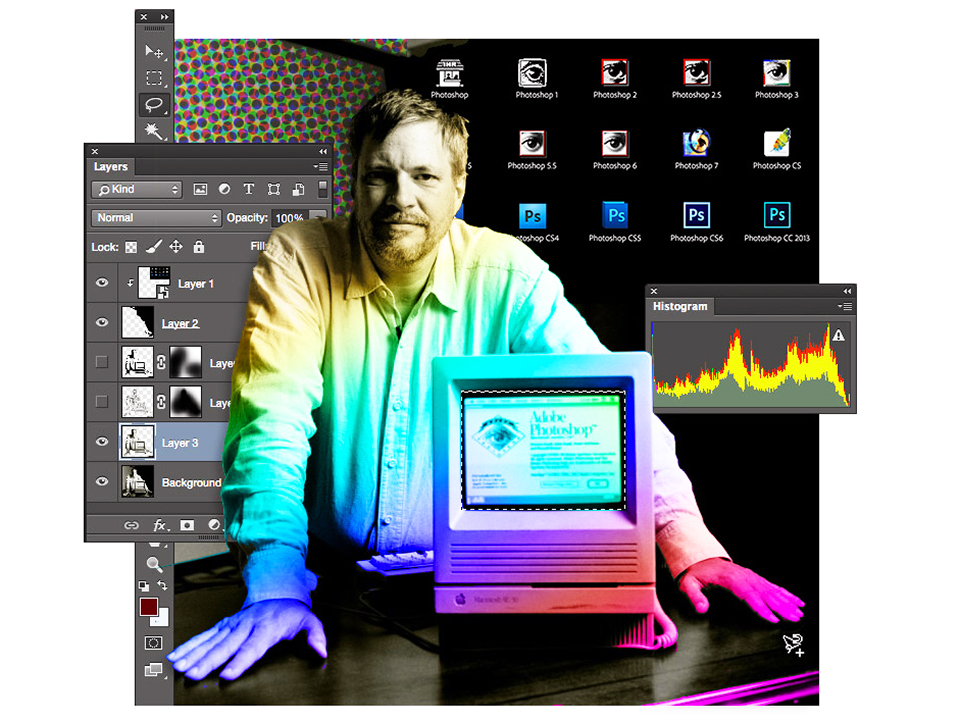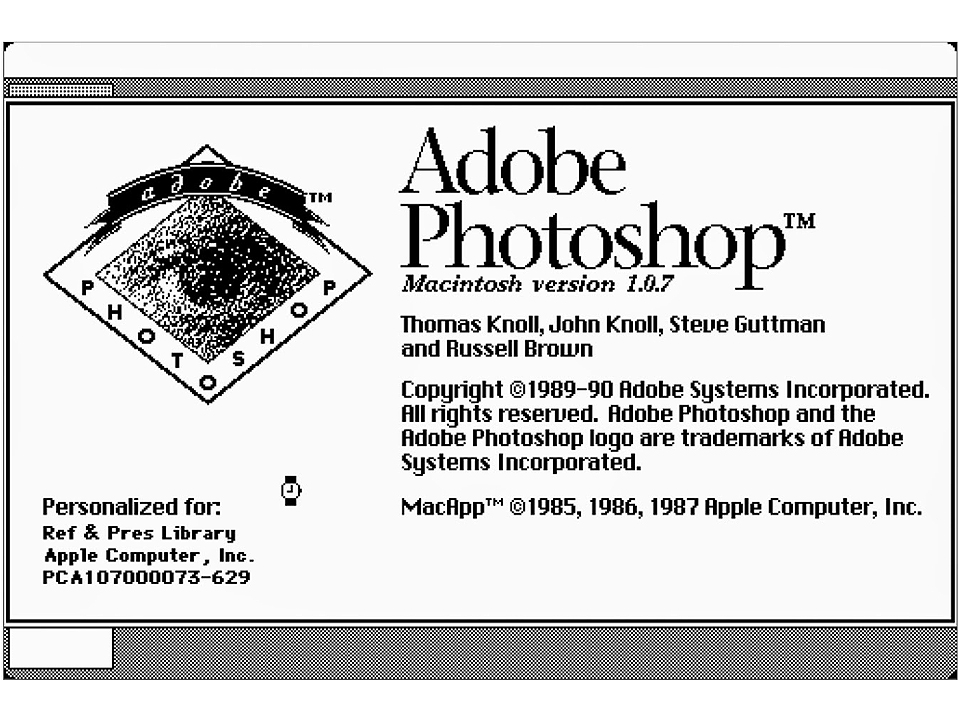Power to the Pixel: Photoshop is Born

 Enlarge
Enlarge
Computers, hair and high tops were all enormous in 1988. Michael Jackson dominated FM radio. Steve Jobs, freshly booted from Apple, was launching NeXT, the computer company that he was convinced would change the world. Email was virtually unknown. The digital technology we rely on today wasn’t just unavailable; it was inconceivable.
And yet at Michigan Engineering, a young PhD student was quietly creating a piece of software that endures today as one of the world’s most popular applications. It would turn countless industries on their heads: marketing, advertising, publishing and of course, photography. It would completely change how we see the world. It would also create a brand-new verb: to Photoshop.
On the factory floor
Born through an unlikely mix of procrastination, Midwestern factory grit, Hollywood special effects and impeccable timing, the Photoshop story stretches across disciplines and time zones. It began at Michigan Engineering, where Thomas Knoll, a PhD student in computer vision and son of U-M Nuclear Engineering department chair and alumnus Glenn Knoll, was working on how to make factory robots work better.
“There’s a bin of randomly arranged parts and a robot,” Thomas once said. “The robot has to be able to recognize and grab a part out of the bin, even if it’s partially obscured by other parts. That means that the robot has to be able to find the edge of an object.”
So Knoll wrote computer algorithms that would find the edges of objects within an image. One algorithm, called the Sobel Edge Technique, was the genesis of Photoshop. In fact, it’s still in the software today; just click on the “Find Edge” filter. But Knoll didn’t think much about it at the time.
Across the country in California, Knoll’s brother John was working as a motion control camera operator at special effects giant Industrial Light & Magic. Convinced that computer graphics were the future of special effects, John was frustrated with the difficulty of displaying graphics on his new Macintosh computer. He turned to his brother Thomas for help, asking him to write a few basic image display tools.
One algorithm at a time
His requests couldn’t have come at a better time. Back in Ann Arbor, Thomas was slogging through the writing of his lengthy PhD dissertation. He welcomed his brother’s requests, glad to have something – anything – to free him from the drudgery of writing. So Thomas wrote some rudimentary image display tools for his brother. But one idea inevitably led to another, and John began asking for more and more advanced features, including tools that would enable him to manipulate images.
“My brother wouldn’t take no for an answer,” Thomas said. “And I really disliked writing papers, so I procrastinated by writing this computer program.’”
It would completely change how we see the world. It would also create a brand-new verb: to Photoshop.
Thomas devoted more and more time to the project, and eventually, John asked him if he could bundle the tools he’d created into a single application. He did, calling it “Display.” It was then that the brothers realized they were onto something.
“It was a lot of fun,” Thomas said. “The program became more and more powerful, and at some point, my brother said, ‘We could sell this thing.’”

 Enlarge
Enlarge
Revolution in a box
Once again, the brothers’ timing was impeccable. Desktop publishing was coming into its own with Adobe’s invention of PostScript, a programming language that enabled printers to print complex page layouts. The new PageMaker software provided a way to create sophisticated page layouts, and Adobe Illustrator made it possible to create illustrations for those layouts. But the market still hadn’t settled on a professional image manipulation program.
Enter the Knoll brothers with their new software, which they’d recently renamed “Photoshop” based on an offhand suggestion at a product demo. The two went on the road, shopping out their new program to several potential suitors. Many didn’t see its potential, or were working on products of their own.
But Adobe saw things differently. They believed that this “Photoshop” could be a good fit with their existing PostScript and Illustrator businesses. The two parties reached a handshake agreement in late 1988 and Adobe Photoshop hit store shelves for the first time in 1990.
Reality, retouched
The impact of the new software was, of course, greater than anyone could have predicted. In the publishing industry, it changed photo retouching from a complex process that required specialized equipment to something that could be done in a few minutes. In film, it provided an inexpensive new way to produce special effects.
Then things really took off with the advent of digital photography. Today, even hobbyists can retouch photos and create images that better reflect or even improve upon reality. For professionals, innovations such as layers and digital masks have created a whole new visual vocabulary, turning digital photos into the raw materials for intricate, multilayered works.
In 2012, after years of working as an independent consultant, Thomas Knoll became a full-time employee of Adobe, where he continues to play a central role in the evolution of the software that he and his brother created. Buoyed by a steady stream of new features and image formats, Photoshop continues its uninterrupted run as the most popular image manipulation software for both professionals and hobbyists. For a product conceived during the Cold War, that may be the biggest feat of all.
“My brother wouldn’t take no for an answer,” Thomas said.

 Enlarge
Enlarge
Long before we were Tweeting our status and Instagramming dinner, we were Photoshopping pictures. But when, exactly, did Photoshop become a verb? No one is quite sure. Steve Guttman, the product manager for Adobe in Photoshop’s early days, has suggested that it happened around 1992. “Photoshop” made it into the Merriam-Webster dictionary as a verb in 2006.
Adobe, for its part, has been dead-set against the trend from the beginning. Instead, they suggest saying that your cool new meme has been “enhanced with Adobe Photoshop software.” They haven’t had much luck with that.
See this video profile of Thomas Knoll.
Questions and Answers with Thomas Knoll
While Photoshop co-creator Thomas Knoll currently lives in Silicon Valley, he’s an Ann Arbor native who returns often to visit family. We spoke with him during a visit in the summer of 2016.
Talk a little about the state of the software business at the time you were developing Photoshop.
That was about 1988, and to be honest, I thought the business was played out. Apple was formed in the late 1970s, IBM came out with the PC in the early 1980s. So I figured we were ten years past the time when people in their garages could make a big dent in history.
I had always planned on going through school, getting a PhD, getting a job and getting a paycheck. So not working on my PhD to do this piece of software seemed like a big risk at the time.
So what convinced you to go ahead with Photoshop?
Well, it was a very fun project to work on. I was probably working 80-hour weeks on the computer, but it wasn’t really that hard. It was actually very addictive, being able to do this new magic with these images that I couldn’t do a few days ago. And it got more and more magical as it went on.

 Enlarge
Enlarge
Tell me about the process of working with your brother John to develop the software.
John has much more of an outgoing personality—he’s good at talking his way into projects. He was the one who was talking to companies, doing the demos and getting feedback.
So the typical process was John would come back with an idea for some feature and I’d say, “that won’t work because….” Then I’d mull it over for a few days and figure out how to accomplish the same goal in a way that would work better. So a lot of the end features and user interfaces are mine, and a lot of the ideas for the core goals and functions came from John.
It’s hard to think of another piece of software that has had the longevity of Photoshop. Why do you think it has endured for so long?
I think the danger with a piece of software over time is that you get so many different features designed over different time periods that features and styles tend to clash with each other. We’ve largely been able to avoid that with Photoshop.
We also kind of lucked out because the hardware people use has gotten dramatically better. Images are now very easy to capture and use, there are so many ways of getting images out and of course the whole Internet phenomenon. That all happened after Photoshop was established, and we’ve been able to innovate and add new functions to take advantage.
What do you think is the most exciting area of the business right now?
People are sort of awash in images right now because of digital cameras, and the big technological change is trying to cope with them. All the devices, how to show images to others and the concept of having images in the cloud and synced up to your devices. There are a lot of companies that want to do that, so it’s going to be interesting.
What has surprised you most over the years?
That Photoshop has been so incredibly successful. It’s hard to fathom how successful it actually has been. It still surprises me when I’m watching some random movie or TV show and hear the name, or when I walk into a bookstore and see the Photoshop shelf.
Most of the time I can live my life and ignore it. I think ‘I’m just a regular person and I have this job.’ But those are the two times when it hits home.
Are you still involved in photography?
When digital cameras and inkjet printers became really high quality, it inspired me as an amateur photographer. So for the last 12 years or so, I’ve been doing a lot of wildlife and landscape photography. I try to take two or three trips a year.
What advice would you give to someone who’s considering a career in the software business?
Don’t do something unless you enjoy working on it and it inspires you. People think I had this grand plan for Photoshop, but the reality is that it was a project that I was very passionate about because it was fun.
See Thomas Knoll’s photography from around the world on his website, TKnoll.com.
 MENU
MENU 
